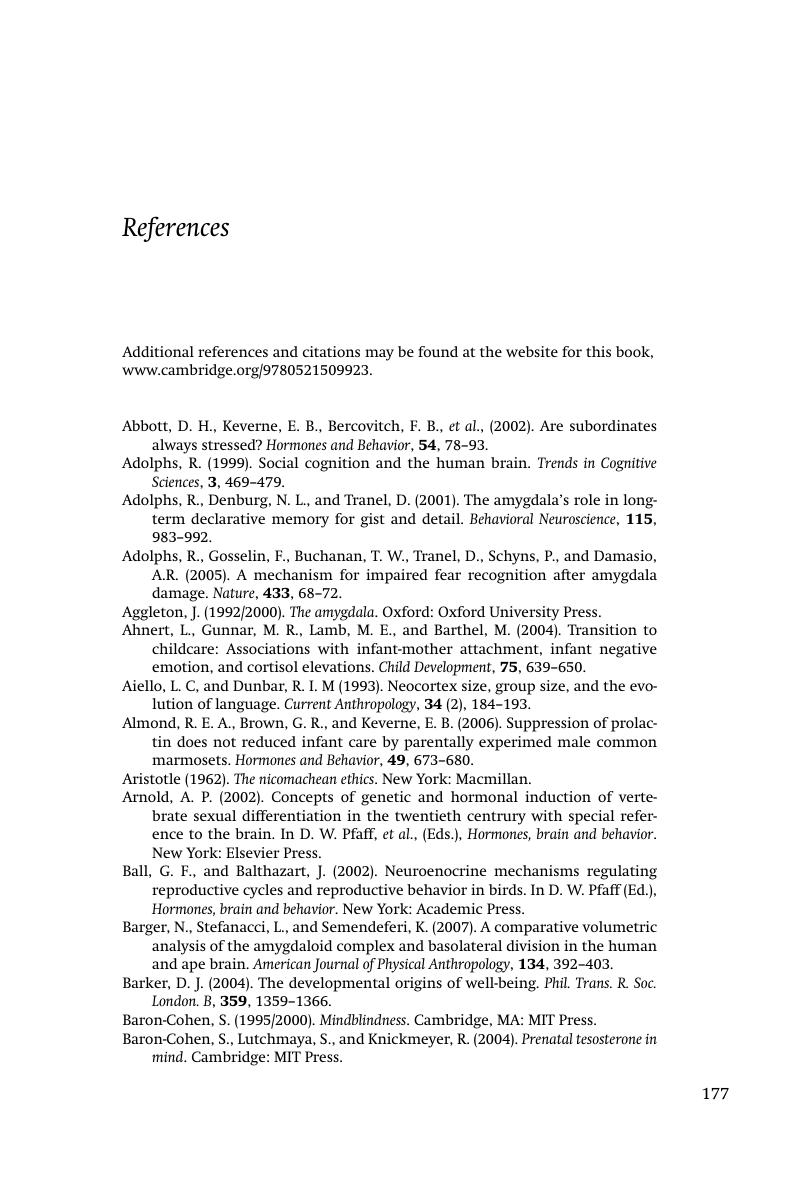Book contents
- Frontmatter
- Contents
- Preface
- Introduction
- 1 Evolutionary Perspectives and Hominoid Expression
- 2 Cognitive Competence and Cortical Evolution
- 3 A Window into the Brain
- 4 Chemical Messengers and the Physiology of Change and Adaptation
- 5 Social Neuroendocrinology
- 6 Cephalic Adaptation: Incentives and Devolution
- 7 Neocortex, Amygdala, Prosocial Behaviors
- Conclusion: Evolution, Social Allostasis and Well-Being
- References
- Index
- References
References
Published online by Cambridge University Press: 18 April 2011
- Frontmatter
- Contents
- Preface
- Introduction
- 1 Evolutionary Perspectives and Hominoid Expression
- 2 Cognitive Competence and Cortical Evolution
- 3 A Window into the Brain
- 4 Chemical Messengers and the Physiology of Change and Adaptation
- 5 Social Neuroendocrinology
- 6 Cephalic Adaptation: Incentives and Devolution
- 7 Neocortex, Amygdala, Prosocial Behaviors
- Conclusion: Evolution, Social Allostasis and Well-Being
- References
- Index
- References
Summary

- Type
- Chapter
- Information
- Adaptation and Well-BeingSocial Allostasis, pp. 177 - 192Publisher: Cambridge University PressPrint publication year: 2011



